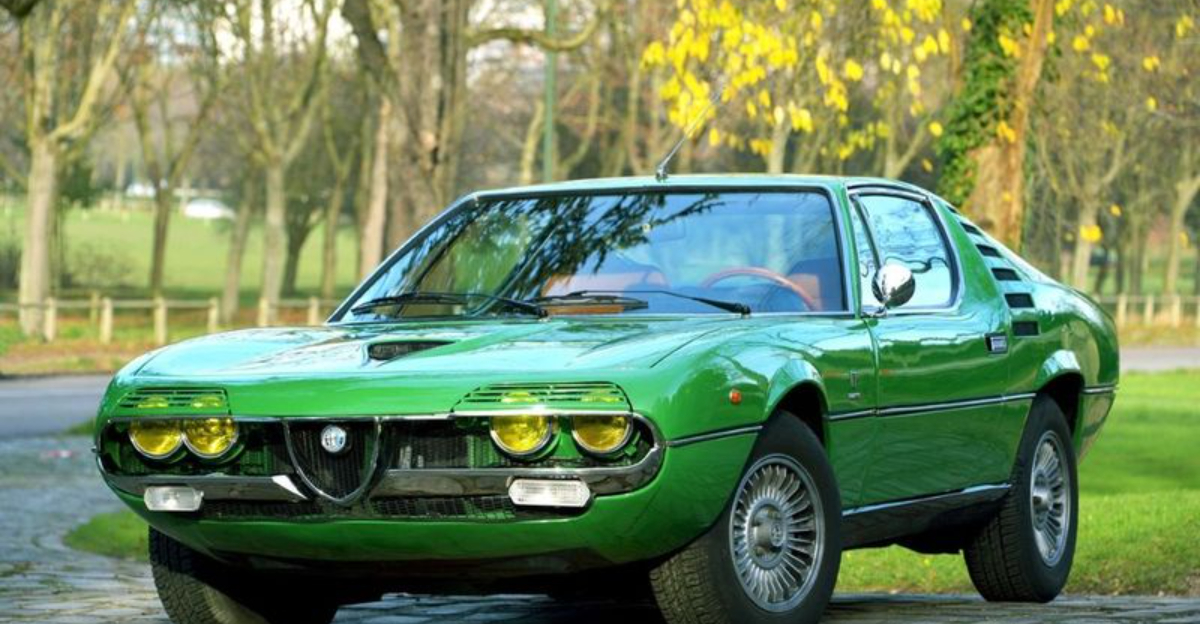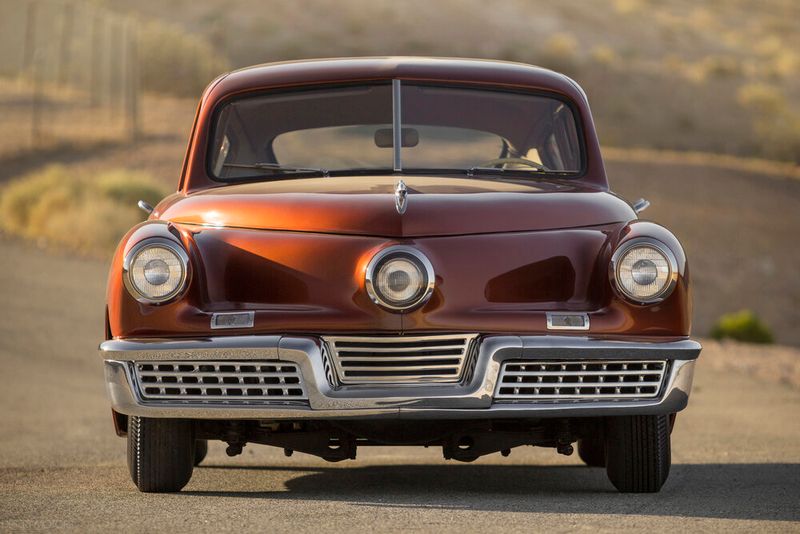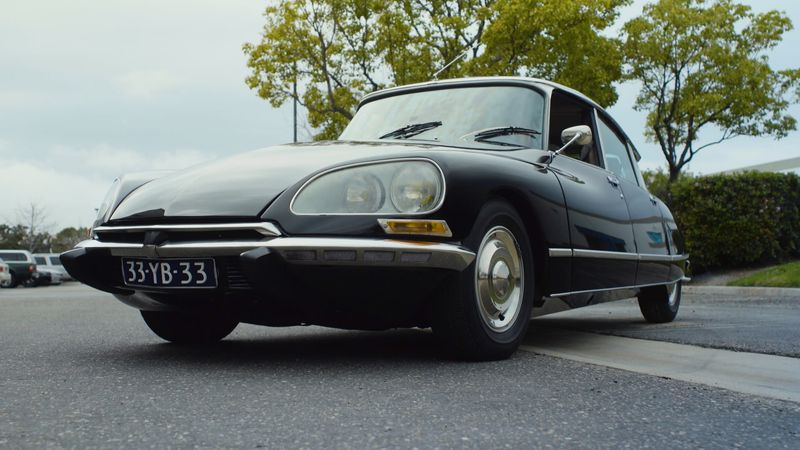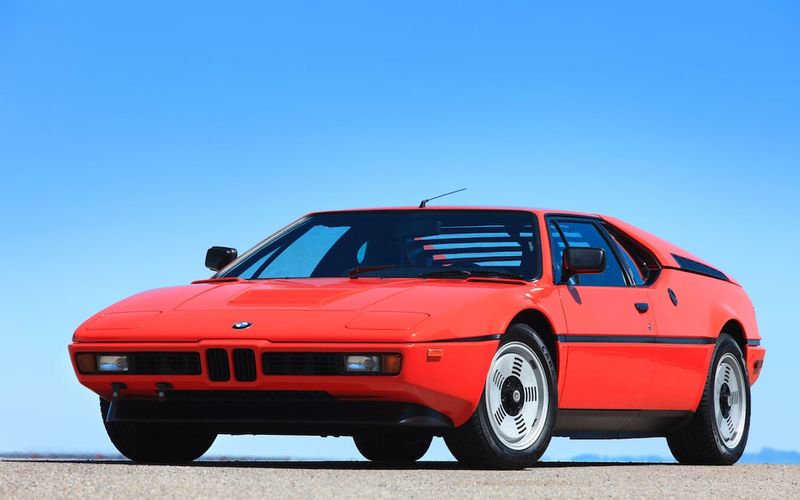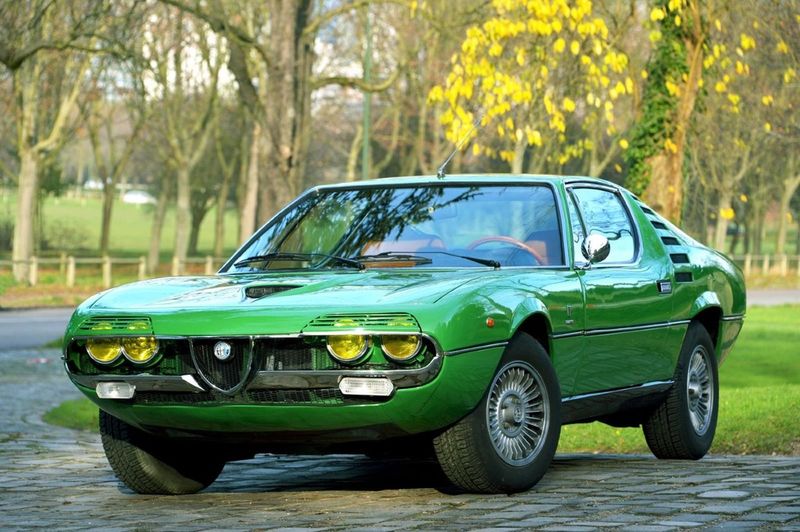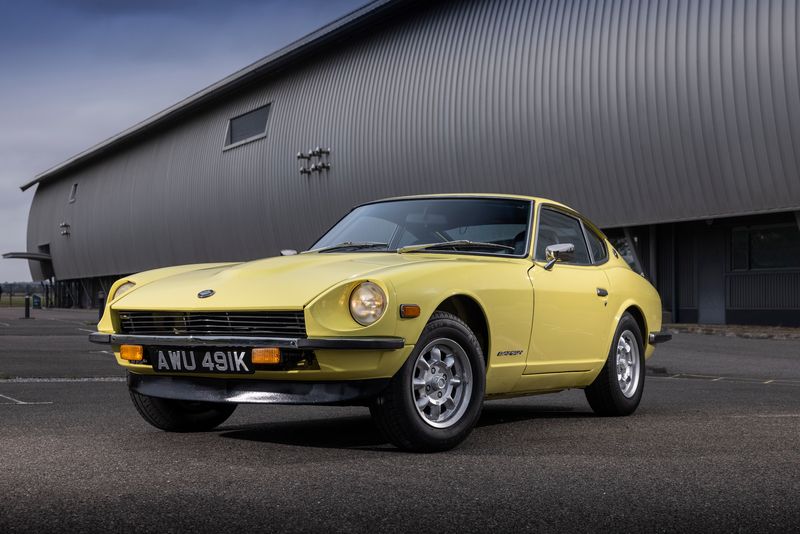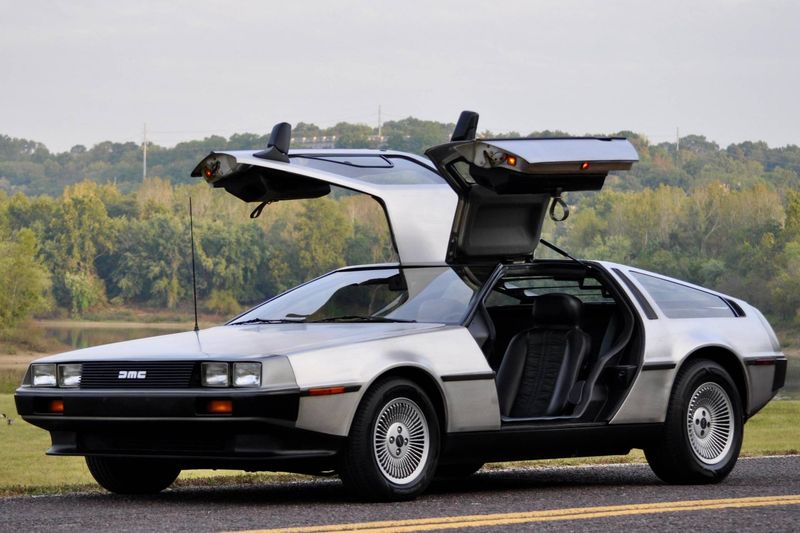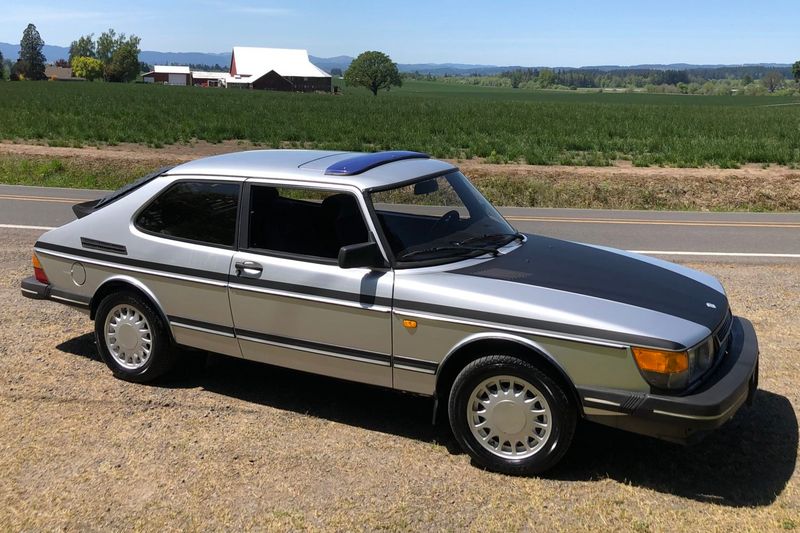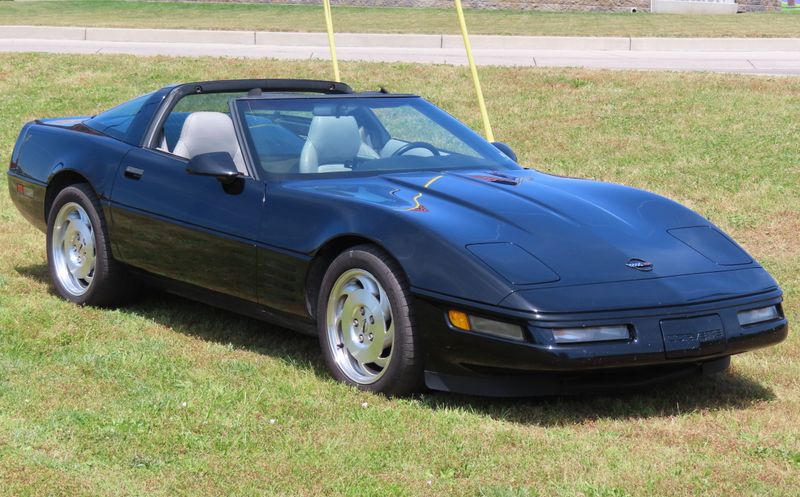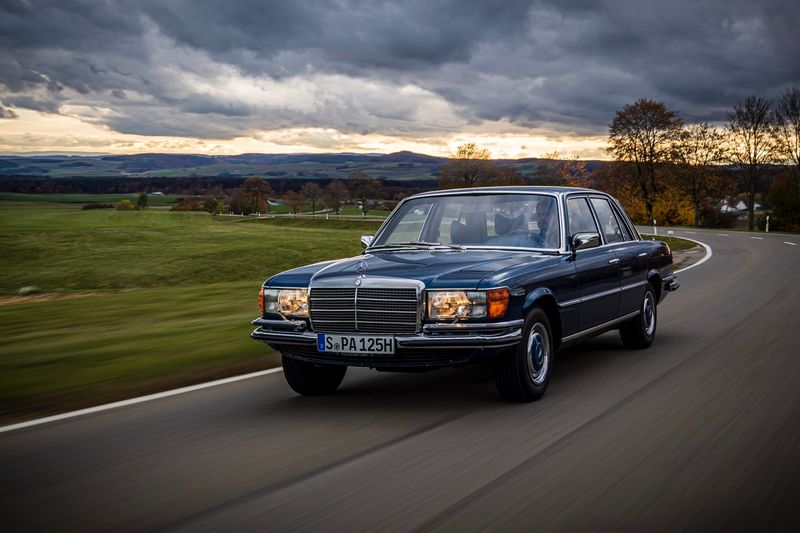Automotive history is filled with brilliant machines that arrived before their time. Some cars packed futuristic technology that maintenance shops couldn’t handle. Others featured designs so radical that conservative buyers ran the other way. From rocket-age styling to computer controls, these fifteen vehicles pushed boundaries only to find the market wasn’t ready for their innovations.
1. Tucker 48 “Tucker Torpedo” (1948–49)
Preston Tucker’s revolutionary sedan broke all the rules with safety features decades ahead of competitors. The rear-mounted, fuel-injected flat-six engine delivered smooth power while freeing up cabin space. Its center headlight turned with the steering wheel, illuminating corners before the car arrived.
The pop-out windshield and padded dashboard protected occupants in crashes when most cars had zero safety features. Despite securing 4,000 orders, Tucker’s company collapsed under SEC investigation pressure and Detroit’s established automakers’ influence. Only 51 cars were completed before bankruptcy, creating one of America’s greatest automotive what-ifs.
2. Edsel (1958–60)
Ford’s billion-dollar blunder arrived with space-age features wrapped in controversial styling. The teletouch push-button transmission controls mounted in the steering wheel hub promised futuristic convenience but confused drivers accustomed to column shifters. Self-adjusting brakes eliminated maintenance headaches when they worked properly.
Marketing hype promised revolution but delivered confusion across four model lines and 18 variations. The infamous vertical grille (mockingly called a “horse collar”) polarized buyers instantly. Rushed development created quality nightmares, with many cars arriving at dealerships needing immediate repairs. Ford’s timing couldn’t have been worse—launching during the 1958 recession sealed Edsel’s fate.
3. Chrysler Turbine Car (1963–64)
Sounding like a jet airplane and running on almost any combustible liquid, Chrysler’s copper-colored experiment nearly revolutionized propulsion. Engineers solved the turbine engine’s traditional lag issues with clever throttle programming. The powerplant had just 60 moving parts versus a piston engine’s hundreds, promising exceptional reliability.
Lucky public testers discovered they could fuel up with tequila, perfume, or peanut oil in a pinch. The turbine spun at a mind-boggling 44,500 RPM, yet remained whisper-quiet inside the cabin. Unfortunately, atrocious fuel economy (averaging 11.5 mpg) and manufacturing costs killed production dreams. Nearly all 55 test cars were destroyed, with only nine surviving examples.
4. Citroën DS (1955–75)
Dropping jaws at the 1955 Paris Motor Show, the DS (pronounced “déesse” or “goddess” in French) looked like it teleported from decades in the future. Its hydropneumatic suspension used pressurized nitrogen spheres instead of conventional springs, allowing the car to self-level and maintain perfect ride height regardless of load.
Drivers could raise the suspension for rough terrain with a simple lever. The swiveling headlights illuminated around corners years before competitors considered the idea. Front disc brakes provided exceptional stopping power when most cars used drums all around.
While Europeans embraced the technological marvel, American buyers found its alien appearance and complex hydraulic systems (which controlled suspension, brakes, steering, and transmission) too intimidating.
5. General Motors EV1 (1996–99)
While technically outside our era, the EV1’s development began in the 1980s with GM’s sunracer program. The sleek electric coupe achieved an astonishing 0.19 drag coefficient—still among the most aerodynamic production cars ever. Its aluminum chassis and plastic body panels kept weight manageable despite heavy lead-acid batteries.
Advanced regenerative braking recovered energy during deceleration. Early adopters adored the silent, maintenance-free operation and surprising performance. Production costs remained astronomical at approximately $80,000 per unit while leasing for just $399 monthly.
When California relaxed zero-emission requirements, GM controversially recalled and crushed almost every EV1, sparking conspiracy theories and environmental outrage that continue decades later.
6. Lincoln Mark VIII (1993–98)
Ford’s luxury coupe packed computerized wizardry beneath its slippery skin. The air suspension automatically lowered the car at highway speeds for improved aerodynamics and raised it for rough roads. Automatic temperature-sensing headlights adjusted brightness based on ambient conditions decades before adaptive lighting became common.
Under the hood lurked an all-aluminum 4.6L DOHC V8 with variable runner intake manifold. At night, the interior illuminated with vacuum-fluorescent displays instead of traditional gauges. The Mark VIII pioneered programmable ride control that adjusted shock absorbers in milliseconds.
Maintenance nightmares emerged as these systems aged. Air suspensions developed expensive leaks, and the complex electronics frustrated technicians without specialized training.
7. BMW M1 (1978–81)
BMW’s first standalone M car began as a collaboration with Lamborghini before the Italians’ financial troubles forced BMW to take over. The mid-mounted 3.5-liter straight-six featured individual throttle bodies for each cylinder, Kugelfischer mechanical fuel injection, and dual overhead cams—technology usually reserved for race cars.
Its fiberglass body covered a tubular space frame designed by Giorgetto Giugiaro. Pop-up headlights and dramatic flying buttresses made it instantly recognizable. The M1’s development coincided with changing racing regulations, leaving it without a proper competition class.
Production complexities required four different companies to handle various assembly stages. Only 453 examples were built, making it one of BMW’s rarest models despite its technological significance.
8. Alfa Romeo Montreal (1970–77)
Born from a concept car at Expo 67 in Montreal, this Italian beauty packed Formula 1 technology for the street. Its 2.6-liter V8 was essentially half of Alfa’s race engine, complete with dry-sump lubrication, SPICA fuel injection, and light alloy construction producing 200 horsepower.
The Marcello Gandini-designed body featured distinctive headlight “eyelids” that retracted when lights were activated. Air intakes punctuated the C-pillars, feeding the side-mounted radiators. Inside, a trio of auxiliary gauges angled toward the driver created a cockpit feel.
Complex maintenance requirements and the oil crisis doomed the thirsty V8. Electrical gremlins plagued owners, with vacuum-operated systems frequently failing.
9. Datsun 240Z Fuel Injection Prototype (Late ’60s)
Before the production Z car conquered America with carburetors, Nissan engineers developed advanced mechanical fuel injection prototypes. These test vehicles used a Bosch-derived system with precisely calibrated fuel metering for optimal power and efficiency. The continuously variable fuel delivery promised smoother acceleration than carburetors could provide.
Engineers struggled with reliability in varying climates and altitudes. Cold-start issues proved particularly troublesome in prototype testing. The complex system required specialized tools and training that most dealers lacked.
Facing delays and cost concerns, Nissan ultimately equipped production 240Zs with reliable Hitachi SU-style carburetors instead. The fuel-injected Z remained a fascinating development footnote until electronic fuel injection finally appeared on the 280Z nearly a decade later.
10. Delorean DMC-12 (1981–83)
John DeLorean’s stainless steel dream machine emerged from a Northern Ireland factory with unprecedented features. The unpainted brushed stainless panels eliminated paint deterioration concerns while creating an unmistakable silver appearance. Gullwing doors required no external clearance to open, perfect for tight parking spots.
The rear-mounted PRV V6 engine sat behind a custom-designed backbone chassis developed by Lotus Engineering. Unfortunately, emissions equipment strangled the engine to just 130 horsepower, delivering disappointing performance that couldn’t match the car’s futuristic appearance.
Production problems and John DeLorean’s cocaine trafficking arrest (later acquitted) killed the company after just 9,000 cars. “Back to the Future” immortalized the DMC-12 years later, ensuring its place in pop culture despite commercial failure.
11. Audi 100 “UFO” C1 (1968–76)
Nicknamed “UFO” for its radical shape, the first Audi 100 emerged from secret development hidden from parent company Volkswagen. Its wind-cheating body achieved an impressive 0.369 drag coefficient when most cars resembled boxy refrigerators. The front-wheel-drive layout maximized interior space while improving traction.
Later models received Audi’s pioneering five-cylinder engine, offering smoother operation than four-cylinders and better fuel economy than V6s. The 100’s unibody construction integrated crumple zones for improved crash safety.
American buyers remained skeptical of the advanced German engineering and unfamiliar brand. Maintenance costs exceeded contemporary American sedans, and the sophisticated drivetrain components proved expensive to repair when problems arose.
12. Saab 900 Turbo (1978–94)
Swedish aircraft engineers applied aeronautical principles to create this quirky turbocharged icon. The Saab 900 Turbo delivered fighter jet-inspired ergonomics with a curved dashboard wrapping around the driver and ignition switch mounted between the seats (preventing knee injuries during crashes).
Its turbocharged engine used an ingenious Automatic Performance Control system that adjusted boost pressure based on fuel quality, preventing engine damage. The unique “hockey stick” profile housed a front-hinged hood that opened forward, simplifying engine access.
Head gasket failures plagued early models due to turbo heat stress. The complex turbo plumbing intimidated mechanics unfamiliar with forced induction. Nevertheless, the 900 Turbo developed a cult following for its combination of safety, practicality, and surprising performance.
13. Rolls-Royce Silver Shadow Hydropneumatic (1965–80)
The first modern Rolls-Royce adopted Citroën’s revolutionary hydropneumatic suspension under license, creating what many consider the world’s smoothest ride. High-pressure hydraulics connected to nitrogen-filled spheres replaced conventional springs, allowing the suspension to self-level regardless of passenger load or road conditions.
Height-sensitive valves automatically maintained perfect ride height. The system provided progressive damping that eliminated both small vibrations and large impacts. Even at highway speeds, passengers could balance coins on edge atop the engine.
This mechanical wizardry came with astronomical maintenance requirements. Hydraulic fluid needed regular replacement with specific mineral oil. Pressure accumulators, pumps, and countless specialized fittings created endless opportunities for expensive leaks as cars aged.
14. Chevrolet Corvette C4 (1984–96)
America’s sports car leaped into the digital age with the C4 generation. The revolutionary digital dashboard replaced traditional gauges with an LED display that changed configuration based on driving conditions. Early models featured a “doug nash 4+3” transmission—a 4-speed manual with automatic overdrive in three gears.
Cross-fire fuel injection used computer controls when most cars still relied on carburetors. The clamshell hood tilted forward completely, providing unparalleled engine access. Underneath, a revolutionary “uniframe” combined frame and body components for increased rigidity.
First-year models suffered from rushed development, with electrical gremlins plaguing the digital displays. The complex suspension delivered impressive handling but required frequent maintenance. The technology improved dramatically throughout production, culminating in the sophisticated LT1 and LT4 engines.
15. Mercedes-Benz W116 S-Class (1972–80)
The first official “S-Class” revolutionized automotive safety and technology, establishing benchmarks competitors couldn’t match. Its crowning achievement—the world’s first production anti-lock braking system—prevented skids during emergency stops. The system used wheel speed sensors and hydraulic valves to modulate brake pressure individually at each wheel.
Crumple zones, a padded dashboard, and a collapsible steering column protected occupants in crashes. The climate control system maintained precise temperature without driver adjustment. Self-closing doors used vacuum-operated assists to gently secure partially-closed doors.
All this technology created a maintenance nightmare as cars aged. Specialized tools and Mercedes-specific diagnostic equipment limited repair options to dealers and specialists, creating eye-watering service bills that humbled even wealthy owners.
